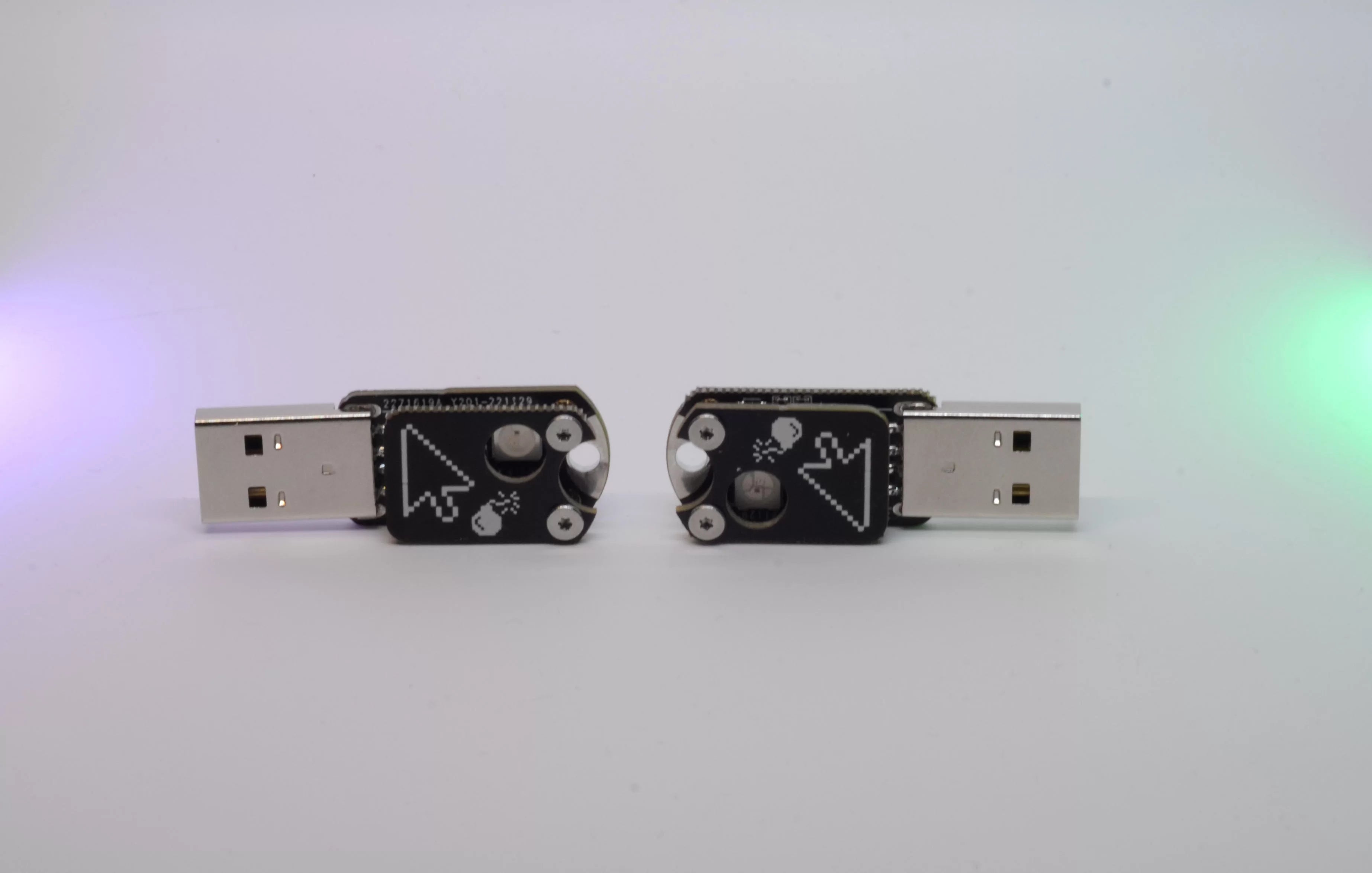The Mouse Whisperer is a compact development kit built on the Microchip ATtiny85 MCU. It acts as a physical mouse, drawing perfect circles when you're away. Big companies often sacrifice your convenience for security, regardless of whether you're working in the office or at home. With the Mouse Whisperer, you can say goodbye to constantly entering passwords when leaving your laptop for a short time, prevent your screen from going dark when you're focused, stay available to your team even during breaks, and bypass stupid laptop policies. It's based on the Micronucleos bootloader for easy USB communication. The provided code initializes it as a USB mouse device, drawing circles until switched off, with a built - in RGB LED indicating its status. You can turn it on and off by touching the board's edge. Its main features include an ATtiny85 MCU, 8 KB Flash, 512B EEPROM, 512B SRAM, a WS2812E RGB addressable LED for status, a TTP223 - based touch sensor for switching, and a sandwich PCB design to protect electronics from cats and kids. It comes pre - loaded with software. Just plug it into a USB socket without needing drivers. Touch the edge to switch it on and off. To update the software, you can use Platformio following the official installation guide or follow the Digispark tutorial for Arduino.

Using the Mouse Whisperer is a breeze. First, you'll find it comes pre - loaded with software. All you have to do is plug it into a USB socket on your laptop or computer. You don't need to install any drivers, so it's really convenient. To turn the device on or off, simply touch the edge of the board. When it's on, it will act like a physical mouse and draw perfect circles, which helps keep your system active. If you want to update the software, there are two ways. For Platformio, follow the official installation guide. Once you've built the project, run the Platformio: Upload task. Then insert the board into the USB, and the flashing process will start automatically. After that, the code will start running right away. If you prefer using Arduino, just follow the Digispark tutorial. As for maintenance, keep it away from water and extreme temperatures. Also, since it has a sandwich PCB design to protect it from cats and kids, try to maintain that protection. If you have any issues, check the source code and documentation for more information.